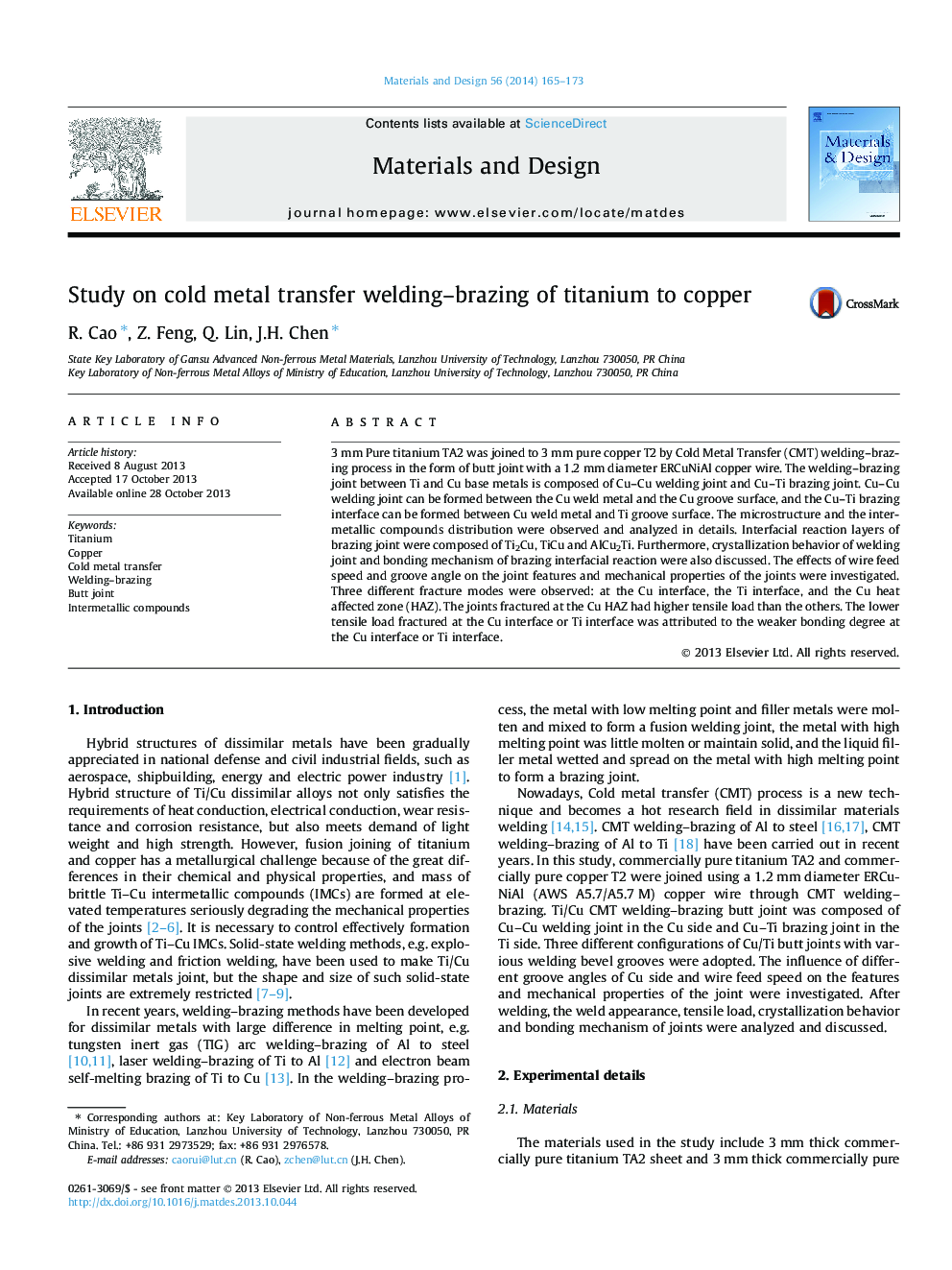| Article ID | Journal | Published Year | Pages | File Type |
|---|---|---|---|---|
| 829425 | Materials & Design (1980-2015) | 2014 | 9 Pages |
•Cold metal transfer welding–brazing of titanium to copper was performed.•Increasing wire feed speed or groove angle will get satisfied Ti/Cu joint.•Increasing wire feed speed or groove angle will increase tensile load.•Ti/Cu CMT butt joint has dual characteristics of fusion welding and brazing.
3 mm Pure titanium TA2 was joined to 3 mm pure copper T2 by Cold Metal Transfer (CMT) welding–brazing process in the form of butt joint with a 1.2 mm diameter ERCuNiAl copper wire. The welding–brazing joint between Ti and Cu base metals is composed of Cu–Cu welding joint and Cu–Ti brazing joint. Cu–Cu welding joint can be formed between the Cu weld metal and the Cu groove surface, and the Cu–Ti brazing interface can be formed between Cu weld metal and Ti groove surface. The microstructure and the intermetallic compounds distribution were observed and analyzed in details. Interfacial reaction layers of brazing joint were composed of Ti2Cu, TiCu and AlCu2Ti. Furthermore, crystallization behavior of welding joint and bonding mechanism of brazing interfacial reaction were also discussed. The effects of wire feed speed and groove angle on the joint features and mechanical properties of the joints were investigated. Three different fracture modes were observed: at the Cu interface, the Ti interface, and the Cu heat affected zone (HAZ). The joints fractured at the Cu HAZ had higher tensile load than the others. The lower tensile load fractured at the Cu interface or Ti interface was attributed to the weaker bonding degree at the Cu interface or Ti interface.
